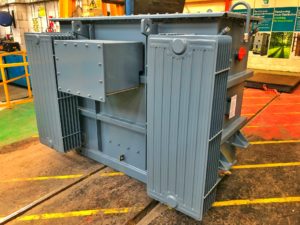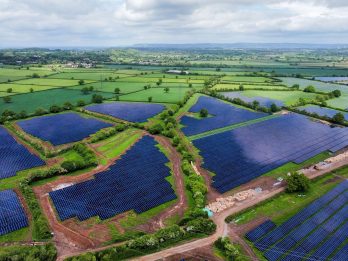How Ultra-Low Loss Transformers can help Shape the Energy Landscape
Energy supply is the UK’s second most carbon-emitting sector, after transport.  It is estimated that the sector accounted for 27% of the CO2 emissions in 2018. Compared to 2017 statistics, the energy supply reduced 7.2% of its carbon, making it the most contributor to decarbonisation. This is attributed to phasing out of coal and increasing the share of low carbon energy sources such as renewables and nuclear.
It is estimated that the sector accounted for 27% of the CO2 emissions in 2018. Compared to 2017 statistics, the energy supply reduced 7.2% of its carbon, making it the most contributor to decarbonisation. This is attributed to phasing out of coal and increasing the share of low carbon energy sources such as renewables and nuclear.
The energy sector has been through many transformations that were triggered by two main factors; policy changes and technological breakthroughs. This plays a role in portraying the futuristic landscape of the UK’s energy which requires stakeholders to adapt and cater to. Ayah Alfawaris from Wilson Power Solutions talks about two key factors that are shaping the energy sector nowadays.
Delivering “Net Zero”
One of the biggest commitments the UK has made is going carbon neutral by 2050 to combat climate change. Being the first major economy to set such an ambitious target poses many challenges that require unprecedented collaboration and drive among regulators, suppliers, and operators.
The UK has invested in low carbon energy and enforced high energy efficiency standards but managed to only cut its emissions by 42% compared to 1990 levels.
Energy efficiency usually addresses what’s inside buildings, from LED to insulation and completely neglects equipment that sits outside and silently guzzles energy. Distribution transformers are a great example. Ultra-Low Loss Transformers offered by Wilson Power Solutions, a Leeds-based transformer manufacturer, create a new venue for energy efficiency; it helps avoid 18.5GWh and 5.2 tons of carbon annually by reducing energy wastage.
Electrification of Transport
33% of the country’s CO2 emissions in 2018 came from transport, the biggest polluting sector. The government’s Road to Zero will help reduce its carbon footprint drastically.
In 2040, all new vehicles will have to be electric in the UK and when the time comes, drivers would want to spend less than 15 minutes charging their EVs. Many charging points already started offering rapid and ultra-rapid charging points with capacities reaching 350kW. Collaboration for infrastructure upgrades has never been this vital.
Ultra-Low Loss transformers are perfect for EV charging points for two main reasons; a. it offers the most reduced transformer losses to minimise energy wastage for EV charging points and b. it provides voltage management with its built-in voltage tap changers that eliminate the need for additional equipment and the hassle that comes with it.
 30 Sep 2019
30 Sep 2019IETF: Industrial Energy Transformation Fund – Phase 3
Industrial emissions account for around 18% of UK emissions. To reach the Net Zero target in 2050, industrial emissions need to fall by around 90% from today’s levels. Industrial Energy Transformation Fund (IETF) launched Phase 3 of industrial grants on Monday 29 January 2024, with the closing date on Friday 19 April 2024, and aims […]
 23 Feb 2024
23 Feb 2024Guide to Replacing Transformers
The third part of the Intergovernmental Panel on Climate Change (IPCC) Sixth Assessment Report (AR6) was published earlier this month. Scientists warn that limiting global warming to 1.5°C is beyond reach but restricting temperature rise to no more than 1.5C to 2C could be the range that will minimize the likelihood of reaching critical environmental […]
 22 Apr 2022
22 Apr 2022IETF: Industrial Energy Transformation Fund FAQ
The Industrial Energy Transformation Fund (IETF) was designed by the UK government to encourage energy-intensive businesses to cut their carbon emissions and reduce their energy waste by switching to energy-efficient low-carbon technologies. A budget of £315 million was allocated by the government to be spent through the IETF. BEIS manages England, Wales and North Ireland’s […]
 4 Apr 2022
4 Apr 2022










